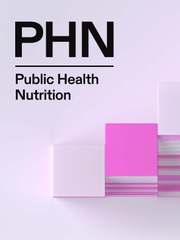No CrossRef data available.
Article contents
Drivers and solutions to unhealthy food consumption by adolescents in urban slums in Kenya: A qualitative participatory study
Published online by Cambridge University Press: 03 April 2025
Abstract
To explore the perceptions, drivers, and potential solutions to consumption of unhealthy, ultra-processed foods (UPF) and foods high in fat, salt and sugar (HFSS), and their contribution to the double burden of malnutrition in adolescents living in urban slums, Kenya.
Qualitative participatory research, through Photovoice, group discussions and community dialogues. Inductive, thematic analysis was undertaken.
Three major slums, Nairobi.
Adolescents 10-19 years (n=102: 51 boys, 51 girls) and adults (n=62).
UPF/HFSS consumption emerged as a predominant theme on the causes of undernutrition and overweight/obesity and foods commonly consumed by adolescents. Adolescents described UPF/HFSS as junk, oily, sugary or foods with chemicals, and associated UPF/HFSS consumption with undernutrition, obesity, non-communicable diseases. They perceived UPF/HFSS as modern, urban, classy, appealing to young people, and minimally processed foods as boring, primitive, for older people, and those in rural areas. Individual-level drivers of UPF/HFSS consumption were organoleptic attributes (taste/aroma), body size/shape, illicit drug use, convenience, adolescents’ autonomy. Social environment drivers were peer-pressure and social status/aspirations. Physical environment drivers were UPF/HFSS availability and accessibility in the slums. Education on healthy eating and adverse effects of consuming UPF/HFSS, through existing structures (youth groups, school, community health strategy) was proposed as potential solution to UPF/HFSS consumption.
UPF/HFSS were perceived as associated with poor nutrition and health, yet were preferred over unprocessed/minimally processed foods. Interventions to promote healthy diets beyond raising awareness are important, while address the underlying perceptions and drivers of UPF/HFSS consumption at individual-level, and social and physical food environments.
Keywords
- Type
- Research Paper
- Information
- Creative Commons
- This is an Open Access article, distributed under the terms of the Creative Commons Attribution licence (http://creativecommons.org/licenses/by/4.0/), which permits unrestricted re-use, distribution and reproduction, provided the original article is properly cited.
- Copyright
- © The Author(s), 2025. Published by Cambridge University Press on behalf of The Nutrition Society


